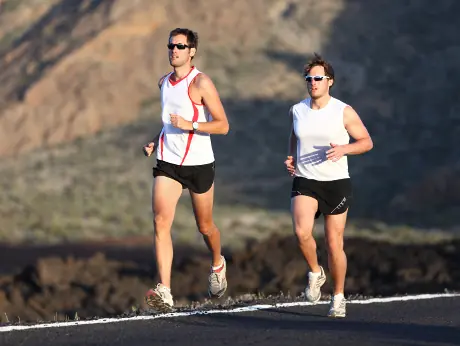
There is running, and then there is ultrarunning.
These races, which can often cover distances from 50K to 100 miles and beyond, require strength, stamina and a sensible fueling plan on race day.
So who better to talk to than a running coach and ultrarunner to find out the specific nutritional needs for this severe and intense sport?
We spoke to running coach Bryon Powell, of iRunFar.com, to get his advice on what runners need to fuel up and maintain their energy to endure an ultra race.
More: How to Train for Your First Ultra
Tip No.1: More Intensity, More Gel-Type Foods
According to Powell, the types of nutrition that ultrarunners use should be dependent upon how much energy they expend. "People that are running the engine hotter [those who are going faster] should stick with gels and their block equivalents, the gummy-type foods. These are easier to process (and) digest."
Energy gels are fast-acting sources of carbohydrates that come in various flavors. They are mixtures of carbohydrates and water, and many runners believe they provide a bigger, quicker energy boost than most sports drinks.
But not all gels are created equal, and runners who use them should practice consuming them at various times during training runs. "You've got to practice your fueling," says Powell. "Just like any other form of training."
Tip No.2: Introducing Solid Foods
For those who aren't trying to set a PR at their ultra-distance race, and are more experienced in fueling for long distances, whole-food carbohydrates are the recipe for success.
According to Powell, "If you're going at a lower percent of your maximum," solids are recommended, since, as the Journal of the International Society of Sports Nutrition points out, the additional fat and protein can help "preserve muscle mass and ensure proper recovery from exercise."
Solid foods he recommends include avocado and turkey rolls, grilled cheese, peanut butter and jelly sandwiches and even potato chips. "It's a lot more comfortable if you can stomach it pace-wise, to have some real food," says Powell. "Your stomach enjoys the ride much more."
More: Ultrarunning Gear Must-Haves
Tip No.3: How to Avoid Gastric Distress
Although it's crucial to know how to fuel, it's just as important to know what not to take in.
Powell suggests that if you are going at a slower pace, there is not any food to stay away from. Runners going for long distances without trying to finish at a certain time will take along any kind of fuel—even pizza!—and stop at aid stations to eat. Those going for speed, however, should steer clear of solids, and stick to the gels and water Powell recommends.
He does make it clear, however, that runners need to be aware of the ratio of water they take in with gels and other aides. If too many carbohydrates, sugars or salt tablets are taken without enough water, gastric distress is likely to follow.
Tip No.4: Know Your Limitations
According to Powell, the most important part of fueling right for ultrarunning is to know your what you can and can't tolerate. He notes that although long-distance runners with lots of experience can fuel by eating a good amount while on the trails, he's seen more inexperienced runners try the same thing only to hit the wall.
Powell also strongly recommends that, when it comes to using salt and electrolyte supplements, one should always "read the instructions, especially in regards to how much salt (it contains)."
Ultimately, like running the race itself, proper fueling comes down to the individual, and what works best for them.
"You're an experiment of one," says Powell. "So find what works for you."
More: 6 Fun Facts About Ultrarunning
 Looking for something else? Search for an ultra race.
Looking for something else? Search for an ultra race.About the Author

Get ACTIVE on the Go


Couch to 5K®
The best way to get new runners off the couch and across the finish line of their first 5K.
Available for iOS | Android






Discuss This Article